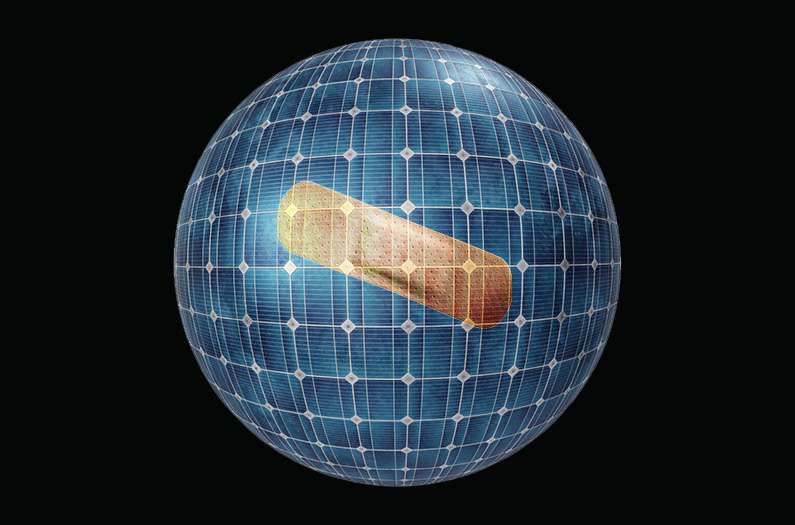Self-healing solar cells pave way to a reliable solar future – Anthropocene Magazine
Silicon-based solar cells dominate the solar power market today. But a new type of solar power technology based on a material called perovskites promises solar panels that are more efficient, cheaper and easier to make, lightweight and perhaps even flexible.
There is a dark side to perovskite photovoltaics though: they degrade under humidity and heat. This has kept the technology from scaling up and being adopted widely.
But now, researchers from Monash University have developed perovskite solar cells that can heal themselves to maintain performance. This self-healing ability could be an important step towards increasing the reliance of next-generation perovskite solar panels. The researchers reported their new strategy in a new paper in the journal Nature.
Solar power installations are going up around the world as the cost of solar panels has gone down in recent years. While silicon is the best technology available today, perovskite solar cells have an edge over them in terms of efficiency. Perovksites are also more abundant materials that are easy to make on large scale. And they could be more easily recyclable.
Heat and water can create tiny defects in the perovskite layer that absorbs sunlight and converts it into electricity in a solar cell. So the researchers turned to a technique called defect passivation, which involves using special chemicals that react with or attach to those flaws and minimize them.
The Monash researchers developed a special healing agent that has chemical bonds that break and recover under heat and moisture. They integrated this material into the perovskite layer so that when it is exposed to the environmental stressors that are usually its detriment, it recovers and maintains its performance.
The resulting solar cells had over 25% power conversion efficiency and stayed stable through 1,000 hours of accelerated ageing tests at 85°C and simulated solar illumination.
“This breakthrough could pave way for more reliable and efficient perovskite solar cells contributing to the global transition towards sustainable energy solutions,” said lead author Udo Bach, professor of chemical and biological engineering at Monash in a press release.
Source: Wei-Ting Wang et al, Water- and heat-activated dynamic passivation for perovskite photovoltaics, Nature, 2024.
Image: ©Anthropocene Magazine
Our work is available free of charge and advertising. We rely on readers like you to keep going. Donate Today


